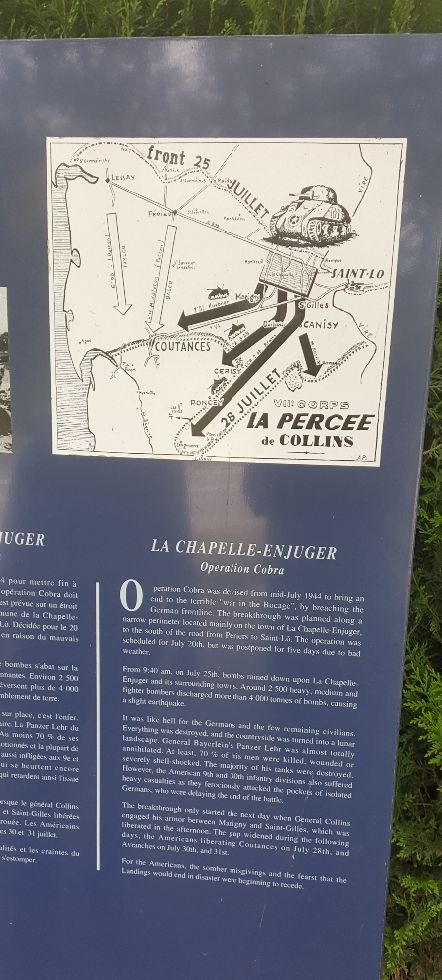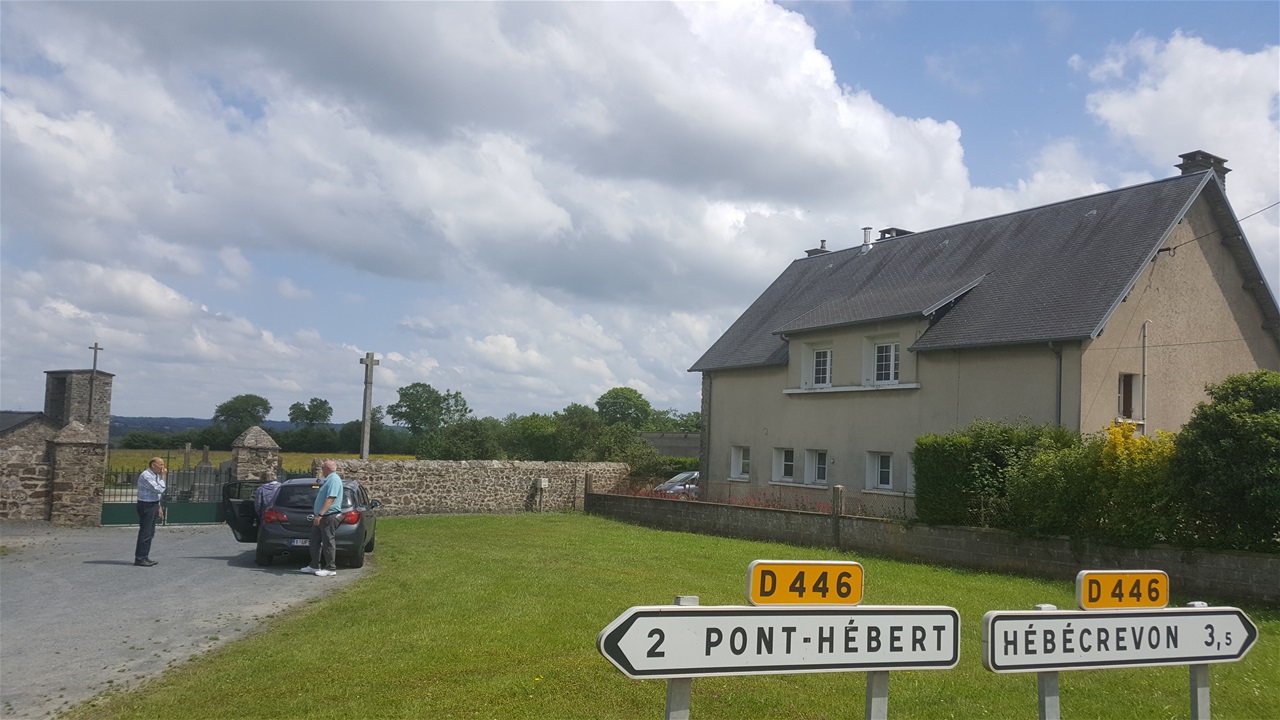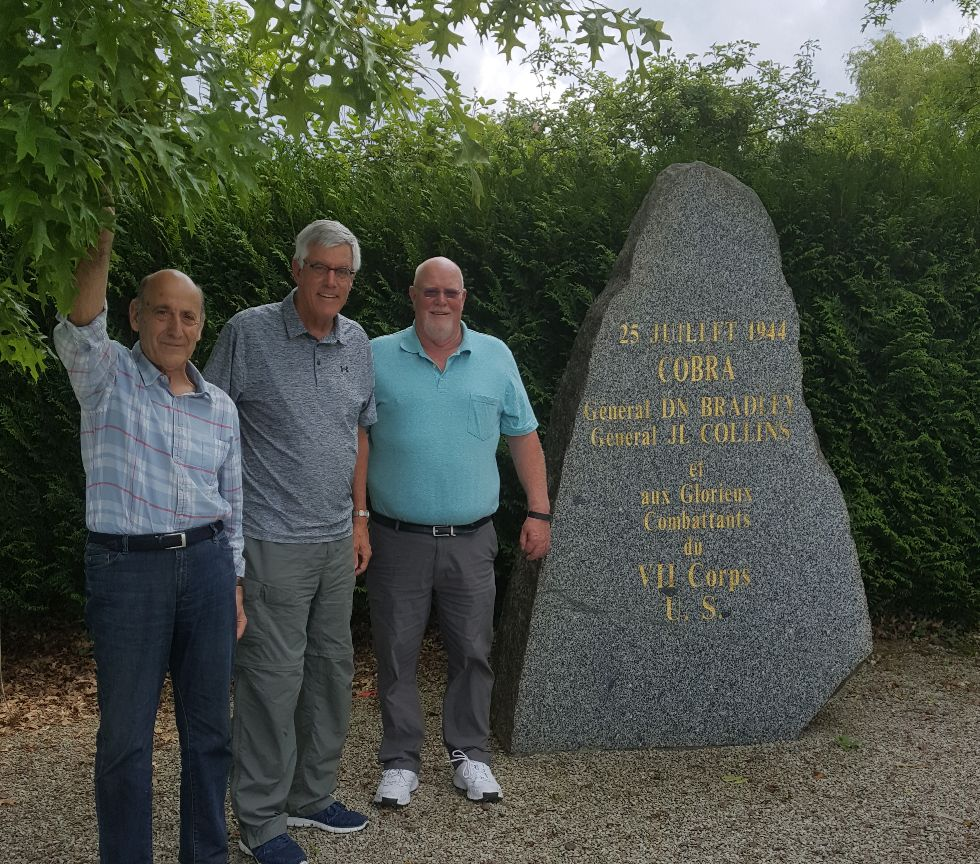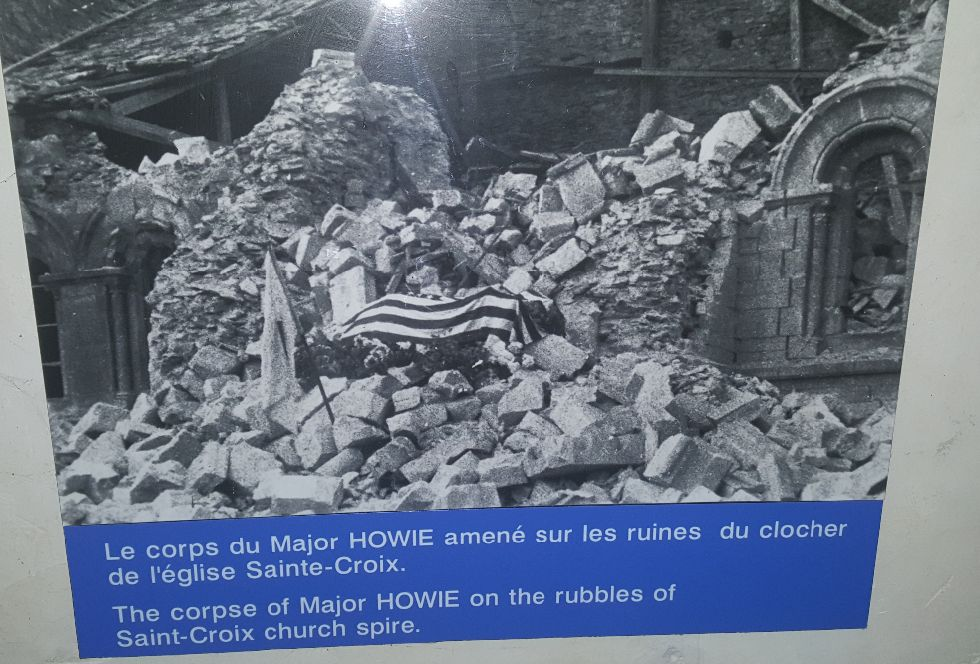The 30th Division began their military efforts in Europe shortly after the landings on D Day (June 6, 1944). (Note: Dad had not yet arrived in Europe.) Saint Lo was a key crossroads town that was identified by the Allies as an early objective. Men, supplies and equipment were moving as quickly as possible to obtain Saint Lo and other inland towns, but the Allies did not have a traditional port to move these supplies through. Mulberries, which are temporary port facilities, were built to facilitate the movement of supplies.
The advance was excrutiatingly slow, with the fighting hard, as the hedgrows provided excellent defensive cover for the Germans. The Allies determined that Saint Lo needed to be bombed to insure that the Germans could not use the road network to bring their war machine to the Allied troops that had landed at Normandy. Saint Lo was taken, with the 35th and 29th Division attacking the town, after many difficult days of fighting in the boccage, or hedgerow, country of Normandy.
Finally, after Saint Lo was taken, the 30th was given the assigment to be the lead Division of "The Breakout". Assigned the code word "Cobra", the Allied planned a blanket bombing campaign that would level 6 square miles of German held land. Bombing aircraft blanketed the sky, with 350 fighter bombers and 1500 heavy bombers were to saturate the area. Immediately after the bombing, American troops, led by the 30th, would advance rapidly though the bombed area and into more open country of France.
On the day of the bombing, with the 30th in place, Allied bombers were confused by the drifting smoke and left bombs short, killing and injuring over 800 of the 30th Division's men readying to move forward. It was the worst day of the 30th Division, but the attack continued.
After 49 days of continuous fighting, the 30th was given some time to rest at Mortain. It wasn't restful.
This is an iconic photo of WW2. From Wikipedia: On July 16, the 3d Battalion (29th Division, 116th Regiment) was given the task of rescuing their comrades of the 2nd Battalion which had been surrounded and were nearly out of food and ammunition; using only hand grenades and bayonets Howies men broke through the German forces on the “Martinsville Line” in less than 2 hours despite being at only half strength. Howie personally lead the attack and eliminated 2 enemy machine gun nests. After resupplying his fellow soldiers he then left the 2nd Battalion to defend their position, reporting that they were "too cut up", and planned to use the 3d Battalion alone to push ahead and liberate St. Lô. On the morning of July 17, Howie phoned Major General Charles Gerhardt, the Division Commander saying “Yes, we can do it” and "See you in St. Lo!"; then issued orders for the attack. Moments later he was killed by shrapnel during a mortar attack. The next day, the 3d Battalion entered Saint-Lô, with Howie's body on the hood of the lead jeep, at Gerhardt's order, so that Howie would be the first American to enter the town. The flag draped body was placed in the rubble of the St. Croix Cathedral and soldiers filed past in a show of respect, local citizen came out and placed flowers at the site.




